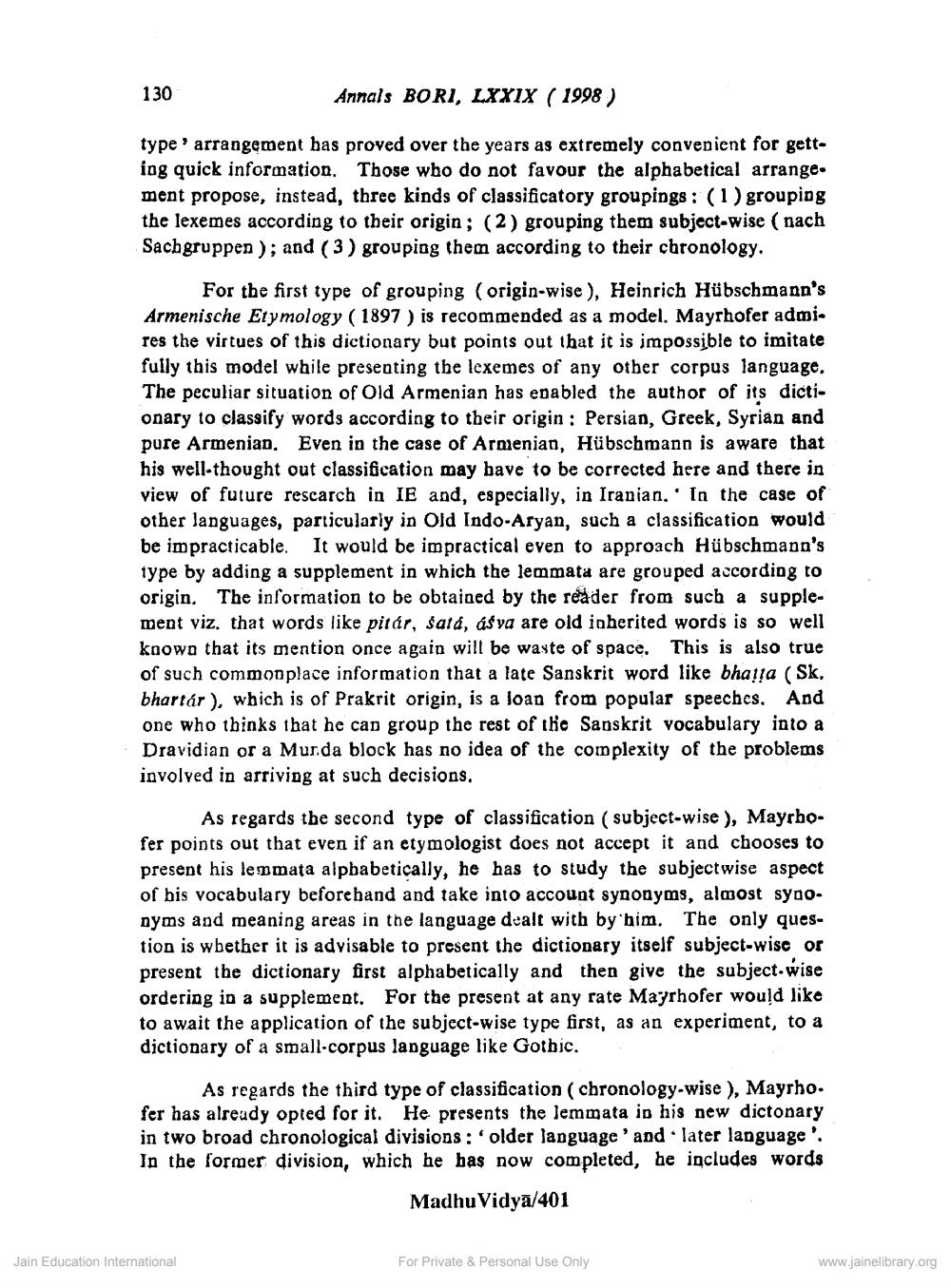________________
130
Annals BORI, LXXIX (1998)
type' arrangement has proved over the years as extremely convenient for getting quick information. Those who do not favour the alphabetical arrange. ment propose, instead, three kinds of classificatory groupings: (1) grouping the lexemes according to their origin; (2) grouping them subject-wise ( nach Sachgruppen); and (3) grouping them according to their chronology.
For the first type of grouping (origin-wise ), Heinrich Hübschmann's Armenische Etymology (1897 ) is recommended as a model. Mayrhofer admi. res the virtues of this dictionary but points out that it is impossible to imitate fully this model while presenting the lexemes of any other corpus language. The peculiar situation of Old Armenian has enabled the author of its dictionary to classify words according to their origin : Persian, Greek, Syrian and pure Armenian. Even in the case of Armenian, Hübschmann is aware that his well-thought out classification may have to be corrected here and there in view of future rescarch in IE and, especially, in Iranian.' In the case of other languages, particularly in Old Indo-Aryan, such a classification would be impracticable. It would be impractical even to approach Hübschmann's type by adding a supplement in which the lemmata are grouped according to origin. The information to be obtained by the reader from such a supplement viz. that words like pitár, šatá, ás va are old inherited words is so well known that its mention once again will be waste of space. This is also true of such commonplace information that a late Sanskrit word like bharja (Sk. bhartar), which is of Prakrit origin, is a loan from popular speeches. And one who thinks that he can group the rest of the Sanskrit vocabulary into a Dravidian or a Murda block has no idea of the complexity of the problems involved in arriving at such decisions.
As regards the second type of classification ( subject-wise ), Mayrhofer points out that even if an etymologist does not accept it and chooses to present his lemmata alpbabetically, he has to study the subjectwise aspect of bis vocabulary beforehand and take into account synonyms, almost synonyms and meaning areas in the language dealt with by him. The only question is wbether it is advisable to present the dictionary itself subject-wise or present the dictionary first alphabetically and then give the subject wise ordering in a supplement. For the present at any rate Mayrhofer would like to await the application of the subject-wise type first, as an experiment, to a dictionary of a small.corpus language like Gothic.
As regards the third type of classification (chronology-wise ), Mayrho. fer has already opted for it. He presents the lemmata in his new dictonary in two broad chronological divisions : 'older language and later language'. In the former division, which he has now completed, he includes words
Madhu Vidyā/401
Jain Education International
For Private & Personal Use Only
www.jainelibrary.org




